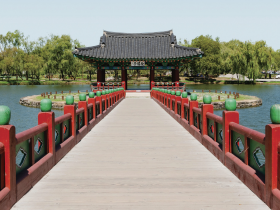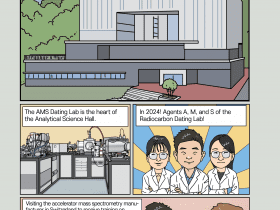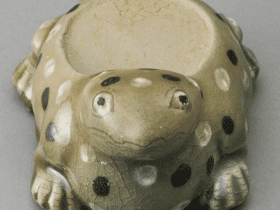Chuseongbudo (The Sound of Autumn) by KIM Hongdo, Sehando (Winter Scene) by KIM Jeonghui


Two painters, having passed through the spring and summer of their lives, entered the fall and winter. Despite their artistic influence that shaped an era, their later years were marked by loneliness and hardship. These painters captured the ephemeral nature of life through their skillful brushwork. This is the story of Chuseongbudo (秋聲賦圖, The Sound of Autumn) and Sehando (歲寒圖, Winter Scene), created by two prominent Joseon Dynasty painters, Kim Hongdo (1745-after 1806) and Kim Jeonghui (1786- 1856), in their twilight years. Their autumnal and wintry landscapes continue to profoundly affect viewers today.Chuseongbudo , known as Kim Hongdo’s last work, is based on a Chinese Song Dynasty poem “Chusheongbu (秋聲賦, Ode to the Sound of Autumn)” by Ouyang Xiu (1007-1072). It portrays a man sitting at a thatched hut’s window conversing with his servant boy in the yard. The scene depicts Ouyang Xiu hearing a sound while reading on an autumn night and inquiring about it, only to learn it is the wind rustling through the trees. On his deathbed, Kim Hongdo visualized Ouyang Xiu’s poignant “sound of autumn (秋聲)” as a bare tree branch swaying in the wind, inscribing “Chusheongbu” beside the painting.Kim Jeonghui, born to a prestigious family 40 years after Kim Hongdo, was a renowned scholar, civil official, and artist, particularly skilled in literati painting. Despite his early fame as a scholar who engaged vibrantly with great minds in China, his later years were marked by a series of hardships. Sehando was painted during his exile on Jeju Island for his disciple Lee Sangjeok (1804-1865). “Sehan (歲寒)” references a phrase from The Analects (論語) about discovering the resilience of pine trees and oriental arborvitae only after winter arrives. Kim linked these trees to his disciple’s unwavering loyalty in the painting, inscribing, “You did nothing better in your treatment of me before exile, and nothing worse


afterward.”Both masterpieces, created late in the artists’ lives, followed similar paths to towards posthumous fame. Chuseongbudo , part of Samsung Chairman Lee Kunhee’s (1942-2020) collection, was donated to the National Museum of Korea in 2021. Sehando , owned by Japanese collector and later Korean businessman Son Segi (1903-1983) and his descendants, was donated to the same museum in 2020. Chuseongbudo and Sehando had been designated as a Treasure and a National Treasure, respectively, even before their donation. These masterpieces continue to resonate as exemplars of Korea’s artistic heritage.





